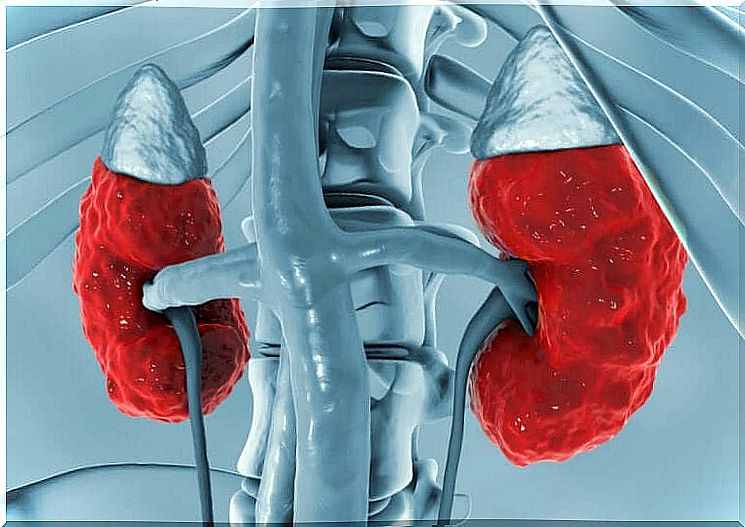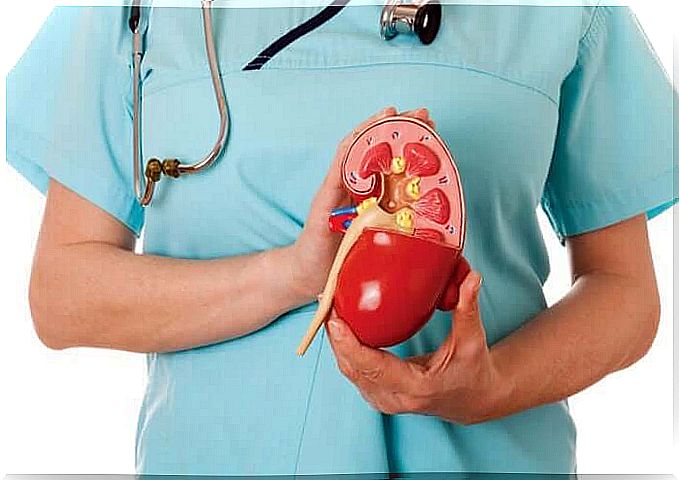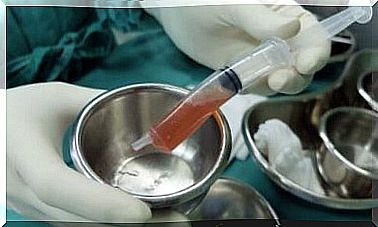Hyperchloremic Renal Acidosis: Causes And Symptoms

Hyperchloremic renal acidosis occurs due to the excessive loss of sodium bicarbonate present in the body. In addition, the kidneys do not eliminate enough acidity from the body.
IS characterized by the reduction of the ability of the proximal tubules to reabsorb the bicarbonate of glomerular filtration.
The incidence of this pathology is unknown. However, drug-induced proximal renal tubular acidosis (ATR) is known to be relatively common. On the other hand, isolated hereditary hyperchloremic renal acidosis is very rare.
Symptoms of hyperchloremic renal acidosis

Symptoms of hyperchloraemic renal acidosis depend on the underlying disease or disorder. This disease causes rapid breathing, lethargy, or confusion. Furthermore, it can cause shock and even induce death.
At first, it manifests itself in very basic urine, due to the lack of reabsorption of bicarbonate. Due to hyperchloraemic renal acidosis, growth retardation and a reduction in bone mineral density also occur.
In some cases, hypokalaemia may appear and, rarely, symptoms of periodic paralysis may occur. However, rickets and osteomalacia are due to a vitamin D deficiency and a lack of phosphate absorption.
Causes
Hyperchloraemic renal acidosis can arise due to kidney disease, such as distal renal acidosis and proximal renal tubular acidosis.
It can also arise in case of intoxication with acetylsalicylic acid, ethylene glycol or methanol. In addition, it can appear in case of intense dehydration.
Hyperchloremic renal acidosis can be acquired or hereditary, in most cases in a recessive but also dominant form. Acquired renal acidosis is caused by a mutation in the SLC4A4 gene (4q13.3).
However, dominant acidosis is caused by mutations affecting an as yet undetected gene. The proximal tubule reabsorbs about 80% of the amount of bicarbonate of the filtration, but a defect in it causes loss of this substance.
Finally, some drugs can cause the onset of acquired renal acidosis.
Diagnosis of hyperchloremic renal acidosis

Unlike patients with distal renal acidosis, patients with proximal renal acidosis hardly have urine pH below 5.5.
To diagnose the disease, it is necessary to demonstrate the absence of bicarbonate resorption. The diagnosis is confirmed by a bicarbonate assessment test.
During the assessment test, an exaggerated increase in urinary bicarbonate excretion and urine pH will be observed as plasma bicarbonate rises above the renal threshold.
Other inherited proximal tubulopathies, such as oculo cerebrorenal syndrome, Dent’s disease and glycogen storage disease, due to GLUT2 deficiency, should also be excluded.
For laboratory tests, arterial blood gas and electrolyte analysis may be required to confirm hyperchloraemic renal acidosis.
Finally, a basic metabolic panel may be requested which consists of a group of blood tests that measure sodium and potassium levels, kidney function and other chemical values. On top of that, it evaluates urine pH, blood and urine ketones, and lactic acid levels.
This set of analyzes can also be useful in determining whether the cause of the acidosis is respiratory or metabolic in nature.
Therapy for hyperchloremic metabolic acidosis

Treatment of hyperchloremic renal acirdosis will depend on its cause. Hereditary proximal renal acirdosis requires lifetime bicarbonate replacement therapy.
To carry out this treatment, a large amount of bicarbonate is needed to normalize the bicarbonate in the serum.
In some cases, diuretics from the thiazide family are prescribed, in doses ranging from 25 to 50 mg per day. For example, hydrochlorothiazide. This is in order to improve the reabsorption of bicarbonate and, therefore, to reduce the amount of bicarbonate needed.
It will also be necessary to monitor plasma potassium levels, so in some cases it will be necessary to administer a mixture of sodium bicarbonate and potassium salts.
Drug-induced hyperchloraemic proximal renal acidosis is usually reversible following the absence of drug administration. With the right therapy, the prognosis of this disease is good.









